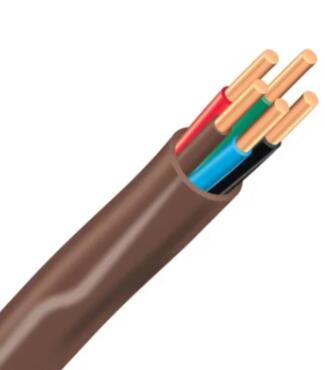Wired Choices: Unveiling the Differences Between Copper and Aluminum Conductors in Electric Wires
2024-01-10
Introduction:
In the intricate tapestry of electrical wiring, the choice of conductive material for wires plays a pivotal role in determining the performance, efficiency, and cost-effectiveness of electrical systems. Copper and aluminum, two of the most prevalent conductors, each bring their own set of advantages and considerations. In this blog, we'll embark on a journey to understand the differences between copper and aluminum conductors in electric wires, exploring the characteristics that shape the choices made in electrical installations.
1. Conductivity:
- Copper:
- Renowned for its exceptional electrical conductivity, copper stands as one of the most efficient materials for conducting electricity. Its high conductivity allows for the transmission of electrical energy with minimal resistance, making it ideal for applications where efficiency is paramount.
- Aluminum:
- While aluminum exhibits lower conductivity compared to copper, it still provides a viable option for electrical conductivity. Aluminum's conductivity is approximately 61% that of copper, necessitating larger cross-sectional areas to compensate for the increased resistance.
2. Weight:
- Copper:
- Copper is denser and heavier than aluminum. This can be a consideration in applications where weight is a critical factor, such as in aerospace or transportation.
- Aluminum:
- Aluminum, being lighter than copper, offers an advantage in situations where weight reduction is a priority, particularly in large-scale installations or in industries that demand lightweight materials.
3. Cost:
- Copper:
- Copper is a premium material with higher raw material costs. The initial cost of copper conductors tends to be higher than aluminum, making it a consideration in budget-sensitive projects.
- Aluminum:
- Aluminum is more cost-effective than copper, making it an attractive option for projects where budget constraints are a significant factor. The lower material cost can contribute to overall project savings.
4. Corrosion Resistance:
- Copper:
- Copper exhibits excellent corrosion resistance, making it suitable for applications where exposure to moisture or corrosive environments is a concern. Copper's resistance to oxidation contributes to its longevity.
- Aluminum:
- Aluminum has lower corrosion resistance compared to copper. It can be susceptible to oxidation over time, particularly in environments with high humidity or corrosive elements. Proper insulation and protective coatings are often applied to mitigate this vulnerability.
5. Thermal Expansion:
- Copper:
- Copper has a lower coefficient of thermal expansion compared to aluminum. This characteristic makes copper more dimensionally stable under temperature variations, contributing to its suitability in applications where temperature fluctuations are common.
- Aluminum:
- Aluminum has a higher coefficient of thermal expansion, which can result in more significant dimensional changes with temperature variations. This factor must be considered in applications where precise dimensions are crucial.
Conclusion:
The choice between copper and aluminum conductors in electric wires is a nuanced decision that hinges on a myriad of factors, including conductivity, weight, cost, corrosion resistance, thermal properties, flexibility, and terminations. Each material brings its own set of advantages and considerations, and the selection depends on the specific requirements of the application, budget constraints, and environmental factors. Whether it's the unparalleled conductivity of copper or the cost-effective lightweight nature of aluminum, understanding the differences between these conductors is pivotal in making informed decisions that ensure the success and reliability of electrical installations. In the world of electric wires, the choice between copper and aluminum is a dynamic dance between efficiency, economics, and the unique demands of each electrical project.



